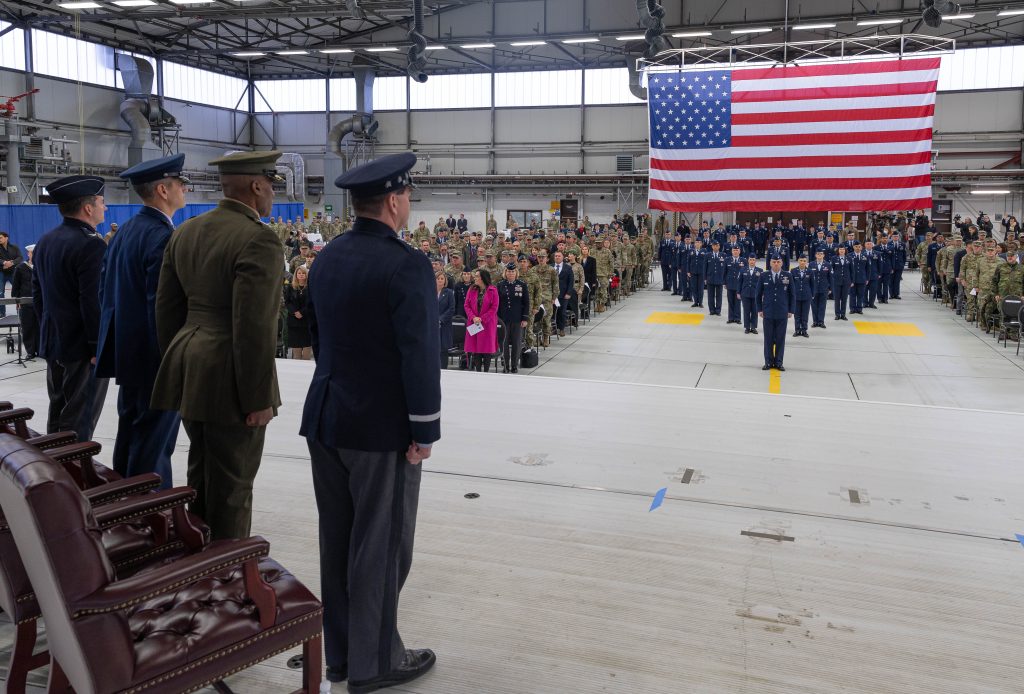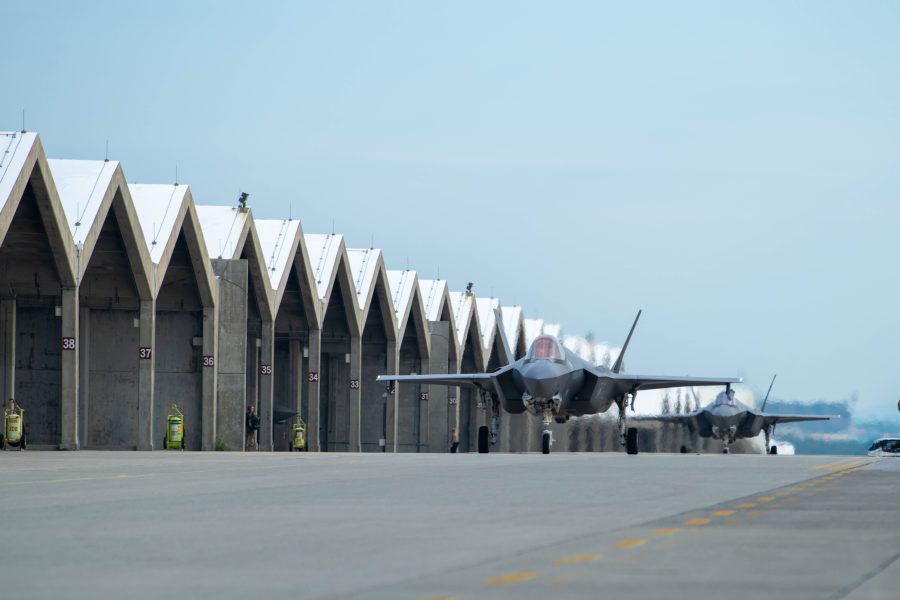Last month, Secretary of the Air Force Frank Kendall warned attendees at AFA’s Warfare Symposium: “We are out of time. We are out of time. We are out of time…For at least two decades, China has been building a military that is … purpose-built to deter and defeat the United States if we intervene in the western Pacific.”
Echoing similar themes, President Joe Biden began last week’s State of the Union address warning of the severe threats to America’s security abroad, quoting President Franklin D. Roosevelt on the eve of World War II: “I address you at a moment unprecedented in the history of the Union.”
Kendall and Biden are correct. China, Russia, Iran, and others pose a dire threat to our nation. Yet the fiscal 2025 budget they submitted to Congress is woefully inadequate to confront those challenges—especially for the Department of the Air Force.
Not since the Cold War has America faced such constant and continuous challenges, in every region and every warfighting domain. China and Russia each bring peer capabilities and demonstrated hostile intent to their increasingly belligerent attitudes. Iran and North Korea pose narrower but still challenging threats, and both have shown increasing ability and willingness to align with Russia and China when it suits their purposes. Both seek to undermine U.S. and allied interests wherever and whenever they can—especially Iran, which sponsors numerous jihadist terror organizations that threaten U.S. and allied interests, especially in the Middle East.
Modern-day threats are not limited to ground wars and coastal skirmishes. Drone and missile threats challenge air defenses, cyber threats touch every aspect of military and civil life, space threats are on a steep ascent.
The U.S. has faced elements of this threat spectrum before, but never have we faced so many concurrent dangers across such a broad range. Taking risk in one to invest in another is increasingly impossible given the challenges in play.
Against this backdrop, the Department of the Air Force is unique. Its capabilities—airpower and spacepower—are essential to counter every single one of these threats. Blue water navies are of little use in continental Europe and tanks will not fare well in the oceans of the Pacific. Airpower and spacepower are different. They deliver crucial capability and effects across the globe—and beyond. They do so both as supporting and supported components for joint force operations. Simply stated, you cannot have joint operations without air and space. They are the glue that enable joint warfare and provide the decisive edge for the U.S. in any peer fight.
Unfortunately, over the past three decades, the Pentagon has sacrificed modernization of our air and space assets, using those accounts as billpayers—first as part of a post-Cold War peace dividend, then to fund combat operations in Afghanistan and Iraq. From 2002 to 2021 alone, the Pentagon spent $1.3 trillion more on the Army than it did on the Air Force. Over that same period, our nation also spent $914 billion more on the Navy.
Underfunding our Air Force exacted a steep price. So many planned modernization efforts were cancelled, curtailed, and deferred that today’s U.S. Air Force is the oldest and smallest in its entire history. Now the bill is due and mounting.
The Air Force can’t buy enough aircraft fast enough. Aging fleets like the E-3 AWACS early warning aircraft, B-1 bomber, F-15C/D fighter, T-38 trainer are all dramatically beyond their anticipated lifespans. So too are older-model F-16 fighters, MH-60 and UH-1 helicopters, and KC-135 tankers.
The Minuteman III ICBM enterprise is now a half-century old, reliant on outdated technology, and in dire need of replacement. Even “new” capabilities like the C-17 are aged, having achieved initial operational capability over 30 years ago. A persistent 2,000-pilot shortfall cripples much of the service, with the shortage of experienced pilots making it harder to season junior ones. Readiness accounts—spare parts, flying hours, aircraft mission-capable rates—are all well below even the hollow-force years of the 1970s.
Space, meanwhile, is undergoing a radical evolution. Adversaries are moving aggressively to contest the domain, putting the Space Force behind in developing the resiliency to operate through attacks on its satellites and ground stations. China and Russia are also looking past standard earth orbits and are increasingly seeking to project military power out to the moon, making cislunar space the next region to contest standards and norms.

Space is crucial to the American way of war, and without it the entire joint enterprise crumbles. Yet for fiscal 2025, the administration is incongruously proposing to cut the Space Force’s budget by 2 percent.
Meanwhile, the Air Force budget submission seeks Congress’ permision to retire 250 aircraft, while acquiring just 91—a capacity death spiral at odds with the growing demands for more more, not less airpower from virtually every combatant commander.
The cash crunch is so bad the Air Force had to cut orders for new fighters in the fiscal 2025 budget, cutting both the F-35 and F-15EX, even as older fighters retire without direct backfill. With a shrinking and aging bomber force—the youngest B-52 is 63 years old—the Air Force should be making forward-leaning investment to more rapidly build new B-21s later this decade. Yet no such funding was included.
Money to boost readiness is likewise too thin, especially to improve mission capability rates and to reverse the pilot shortfall.
This is obviously not what Department of the Air Force leaders wanted. Unfortunately, 2024’s Fiscal Responsibility Act stipulated untenable defense spending caps. Further tradeoffs within the Department of Defense’s topline failed to happen at the scale needed. To that end, the Army and Navy are continuing to pursue long-range surface-to-surface missiles reported to cost over $50M per shot regardless of affordability or practicality. Likewise, the Army’s pursuit of an airborne intelligence, surveillance, and reconnaissance (ISR) aircraft that replicates capabilities already resident in the Space Force and that would not survive in a contested environment.
It is not that the effects delivered by such systems aren’t important; they are. But they can be delivered more effectively and efficiently through alternate means. Given the fiscal pressures in play, the Pentagon must apply a cost-per-effect approach to such decisions and fully implement actual joint collaboration, not just talk about it in speeches.
The defense budget is now in the hands of Congress. Members should note that China’s defense budget increased 7.2 percent this year, while Russia shows no signs of backing off its fight in Ukraine. It is vastly outpacing the Western alliance in artillery production at a time when the U.S. and its allies are failing to back their rhetoric about boosting production capacity without the necessary means. Meanwhile, rogue actors like the Houthis stress our forces—highlighting capability gaps and challenging our ability to defend our forces and our allies.
If the Houthis stress our forces, just imagine what advanced threats might look like against a peer foe in the Pacific. We lack the means to deal with them effectively and sustainably.
Secretary Kendall and President Biden are right to signal the severity of the challenges facing the U.S. today. Now Congress must better align the ends, ways, and means to counter those challenges.
Some will undoubtedly question the price of that investment. They must likewise consider the cost of the alternative. When a deterrent is no longer credible and global tensions escalate to war, the costs go skyward. Most importantly, the price too often translate to lives lost. The price of peace demands we invest in a strong defense today—most especially in airpower and spacepower.
Douglas A. Birkey is Executive Director of AFA’s Mitchell Institute for Aerospace Studies.
